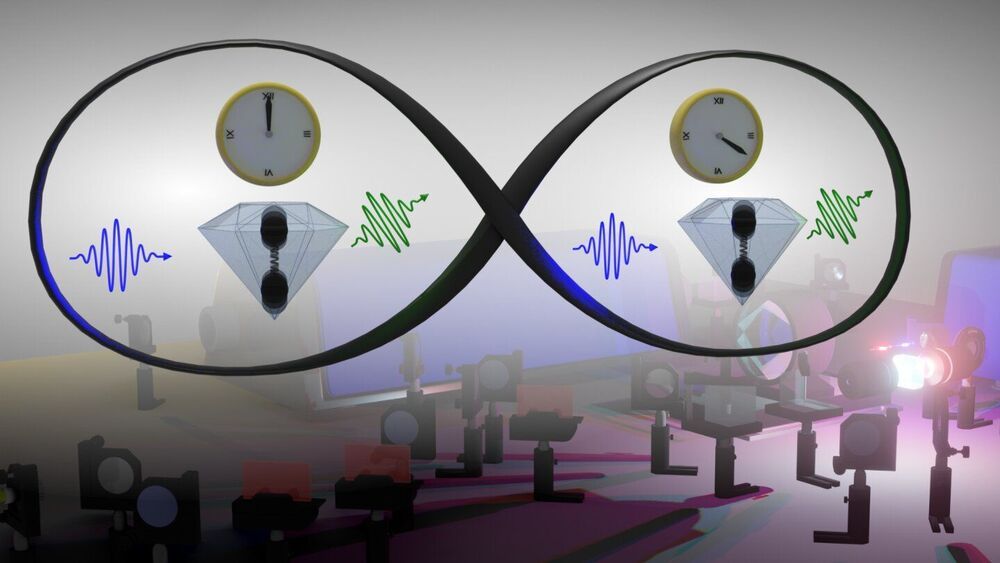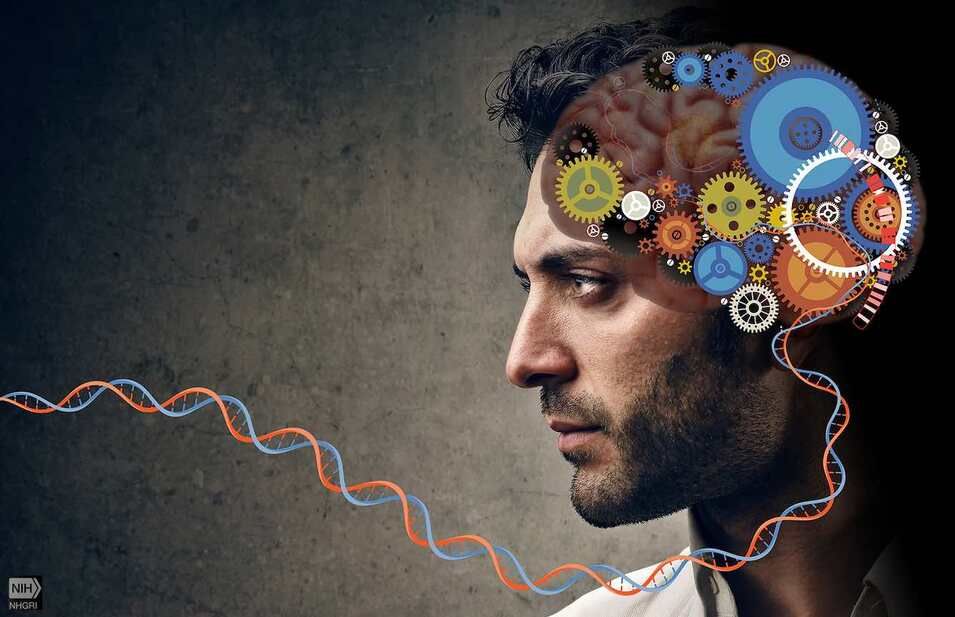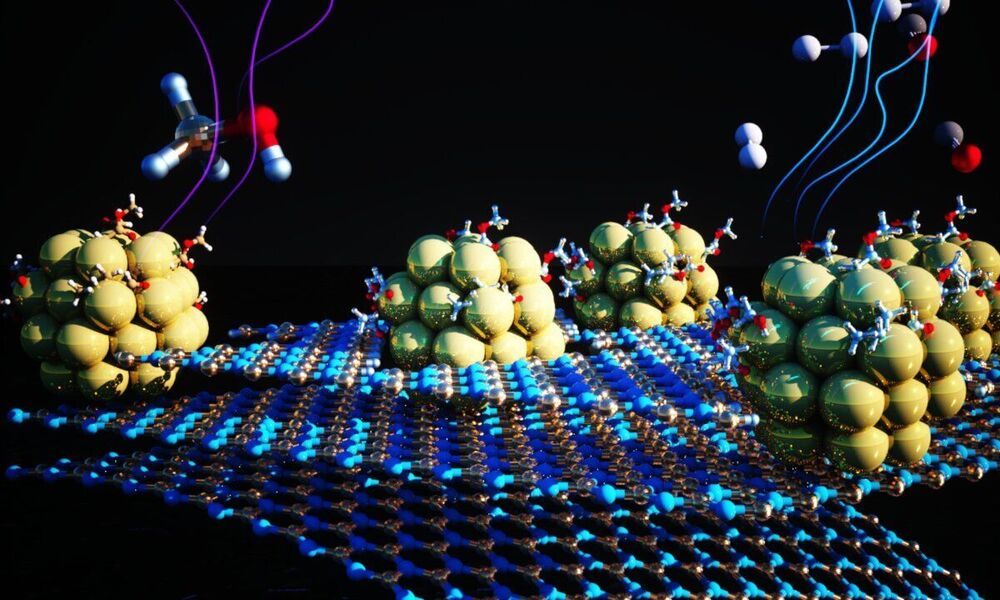Get the latest international news and world events from around the world.

When light and atoms share a common vibe
An especially counter-intuitive feature of quantum mechanics is that a single event can exist in a state of superposition—happening both here and there, or both today and tomorrow.
Such superpositions are hard to create, as they are destroyed if any kind of information about the place and time of the event leaks into the surrounding—and even if nobody actually records this information. But when superpositions do occur, they lead to observations that are very different from that of classical physics, raising questions that spill over into our very understanding of space and time.
Scientists from EPFL, MIT, and CEA Saclay, publishing in Science Advances, demonstrate a state of vibration that exists simultaneously at two different times, and provide evidence of this quantum superposition by measuring the strongest class of quantum correlations between light beams that interact with the vibration.
LUCIDGames: A technique to plan adaptive trajectories for autonomous vehicles
While many self-driving vehicles have achieved remarkable performance in simulations or initial trials, when tested on real streets, they are often unable to adapt their trajectories or movements based on those of other vehicles or agents in their surroundings. This is particularly true in situations that require a certain degree of negotiation, for instance, at intersections or on streets with multiple lanes.
Researchers at Stanford University recently created LUCIDGames, a computational technique that can predict and plan adaptive trajectories for autonomous vehicles. This technique, presented in a paper pre-published on arXiv, integrates an algorithm based on game theory and an estimation method.
“Following advancements in self-driving technology that took place over the past few years, we have observed that some driving maneuvers, such as turning left at an unprotected intersection, changing lanes or merging onto a crowded highway, can still be challenging for self-driving cars, while humans can execute them quite easily,” Simon Le Cleac’h, one of the researchers who carried out the study, told TechXplore. “We believe that these interactions involve a significant part of negotiation between the self-driving vehicle and the cars in its surroundings.”

Space Force official: Russian missile tests expose vulnerability of low-orbiting satellites
Updated Dec. 17 with State Department statement
WASHINGTON — Russia on Dec. 15 conducted a ballistic missile test that U.S. Space Command condemned as a threat to satellites in orbit.
“The nation must do something about this,” said Lt. Gen. Nina Armagno, director of staff of the Office of the Chief of Space Operations of the U.S. Space Force.

Artificial intelligence solves Schrödinger’s equation
A team of scientists at Freie Universität Berlin has developed an artificial intelligence (AI) method for calculating the ground state of the Schrödinger equation in quantum chemistry. The goal of quantum chemistry is to predict chemical and physical properties of molecules based solely on the arrangement of their atoms in space, avoiding the need for resource-intensive and time-consuming laboratory experiments. In principle, this can be achieved by solving the Schrödinger equation, but in practice this is extremely difficult.
Up to now, it has been impossible to find an exact solution for arbitrary molecules that can be efficiently computed. But the team at Freie Universität has developed a deep learning method that can achieve an unprecedented combination of accuracy and computational efficiency. AI has transformed many technological and scientific areas, from computer vision to materials science. “We believe that our approach may significantly impact the future of quantum chemistry,” says Professor Frank Noé, who led the team effort. The results were published in the reputed journal Nature Chemistry.
Central to both quantum chemistry and the Schrödinger equation is the wave function —a mathematical object that completely specifies the behavior of the electrons in a molecule. The wave function is a high-dimensional entity, and it is therefore extremely difficult to capture all the nuances that encode how the individual electrons affect each other. Many methods of quantum chemistry in fact give up on expressing the wave function altogether, instead attempting only to determine the energy of a given molecule. This however requires approximations to be made, limiting the prediction quality of such methods.
SpaceX aims to build a Starlink mega constellation around MARS
To provide internet to the one million people the firm will send to colonize the Red Planet…
SpaceX recently shared an ambitious plan to build a Starlink satellite constellation around Mars. The devices would allow the human who move to the Red Planet communicate.


CRISPR/Cas9 Used to Bring LRRK2 Mutation to Possible Monkey Disease Model
Using CRISPR/Cas9 gene editing tools, researchers introduced a common Parkinson’s disease mutation into stems cells of the marmoset monkey for a first time, paving the way toward a primate model of this disease.

New nanomaterial helps obtain hydrogen from a liquid energy carrier, in a key step toward a stable and clean fuel source
Hydrogen is a sustainable source of clean energy that avoids toxic emissions and can add value to multiple sectors in the economy including transportation, power generation, metals manufacturing, among others. Technologies for storing and transporting hydrogen bridge the gap between sustainable energy production and fuel use, and therefore are an essential component of a viable hydrogen economy. But traditional means of storage and transportation are expensive and susceptible to contamination. As a result, researchers are searching for alternative techniques that are reliable, low-cost and simple. More-efficient hydrogen delivery systems would benefit many applications such as stationary power, portable power, and mobile vehicle industries.
Now, as reported in the journal Proceedings of the National Academy of Sciences, researchers have designed and synthesized an effective material for speeding up one of the limiting steps in extracting hydrogen from alcohols. The material, a catalyst, is made from tiny clusters of nickel metal anchored on a 2-D substrate. The team led by researchers at Lawrence Berkeley National Laboratory’s (Berkeley Lab) Molecular Foundry found that the catalyst could cleanly and efficiently accelerate the reaction that removes hydrogen atoms from a liquid chemical carrier. The material is robust and made from earth-abundant metals rather than existing options made from precious metals, and will help make hydrogen a viable energy source for a wide range of applications.
“We present here not merely a catalyst with higher activity than other nickel catalysts that we tested, for an important renewable energy fuel, but also a broader strategy toward using affordable metals in a broad range of reactions,” said Jeff Urban, the Inorganic Nanostructures Facility director at the Molecular Foundry who led the work. The research is part of the Hydrogen Materials Advanced Research Consortium (HyMARC), a consortium funded by the U.S. Department of Energy’s Office of Energy Efficiency and Renewable Energy Hydrogen and Fuel Cell Technologies Office (EERE). Through this effort, five national laboratories work towards the goal to address the scientific gaps blocking the advancement of solid hydrogen storage materials. Outputs from this work will directly feed into EERE’s H2@Scale vision for affordable hydrogen production, storage, distribution and utilization across multiple sectors in the economy.
Inside JET: The world’s biggest nuclear fusion experiment | On Location
Inside these walls, scientists have been trying for decades to create an unlimited source of energy, nuclear fusion. Welcome to JET, the world’s biggest nuclear fusion experiment.
Scientists argue that fusion could replace coal gas and nuclear fission in the energy mix alongside renewable energy, which can prove to be unreliable. If we can learn to control it, nuclear fusion could change life as we know it. But that’s a big if.
This video was produced as part of Digital Society, a publishing partnership between WIRED and Vontobel where all content is editorially independent. Visit Vontobel Impact for more stories on how technology is shaping the future of society: https://www.vontobel.com/en-int/about-vontobel/impact/
With thanks to the CCFE: https://ccfe.ukaea.uk.
#WIRED #NuclearFusion #NuclearReactor